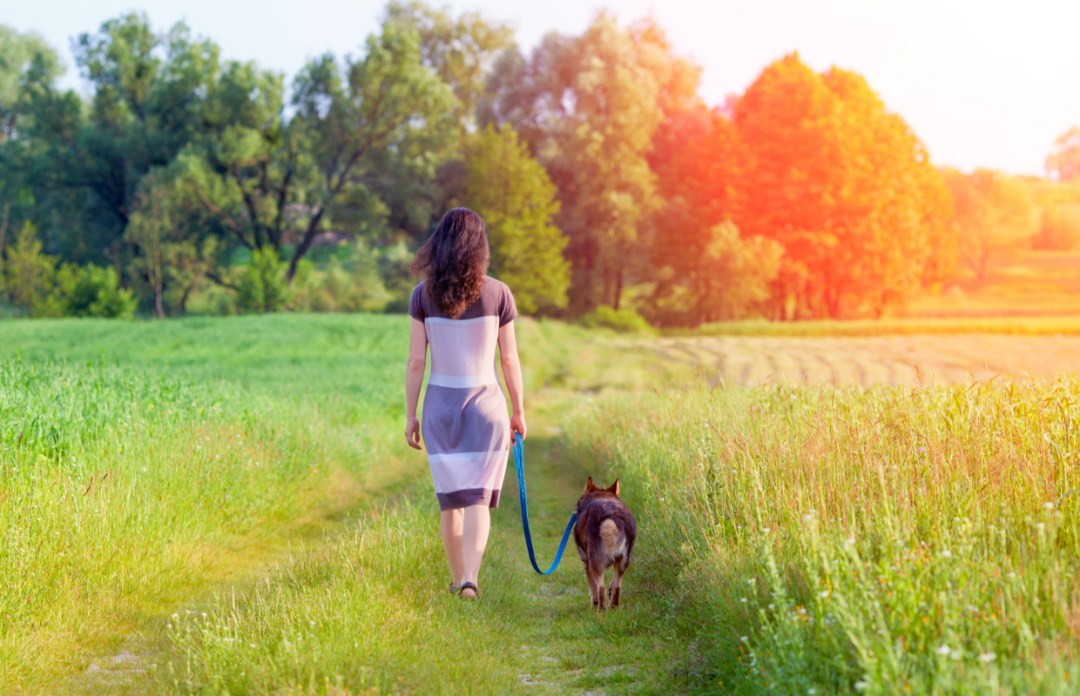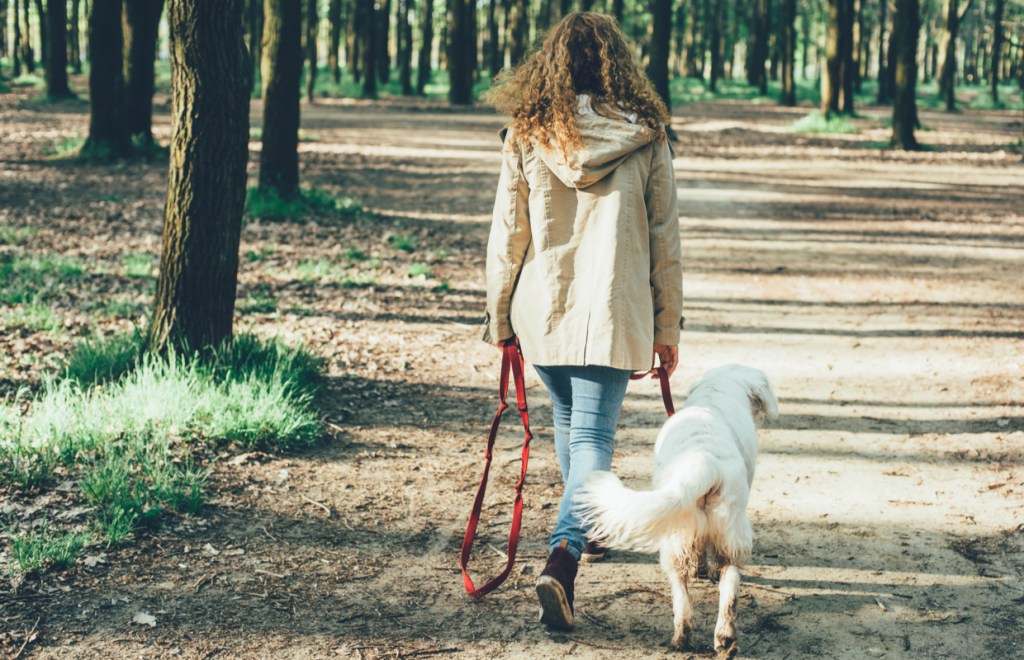Mindful dog walking: create calmer walks for you & your dog
Discover how you and your four-legged friend can reap the well-being benefits of more mindful dog walking in just five days...

There are many joys that come with being a dog owner: the warm welcome home you can always rely on, the evening snuggles on the sofa together, the promise of friendship and loyalty no matter what. However, another key benefit of owning a dog is that it gives you an excuse (not that we need one!) to get out for a walk every day.
While walking is a fun, relaxing and hugely beneficial activity, many people find themselves skipping their daily walk because other tasks and engagements take precedent. Yet, when you have a dog, you are required to find this time for at least one walk every day, for your dog’s health and wellness.
This daily walk is the perfect opportunity to practice mindfulness and connect with your furry friend. However, research suggests that for many dog walkers, the daily ordeal has become a chore, often causing a great deal of stress, both for them, and their pooch.

Why we all need mindful dog walking
Research shows that almost two thirds of dog owners (63%) are unable to switch off from screen time whilst on the daily dog walk. Furthermore, many owners also experience stressful behaviours such as dogs pulling on the lead (68%) or barking at other dogs (49%).
All in all, rather than a mindful, relaxing experience, where an owner and dog can enjoy each other’s company, it seems that dog walks have become a stressful, resented chore. We want to help you change this. It’s time to turn your stressful strolls into more mindful walks, to benefit both you and your dog.
Certified Dog Behaviourst Caroline Wilkinson and Clinical Psychologist Linda Blair reveal how you and your four-legged friend can reap the benefits of more mindful dog walking in just five days…
How to create more mindful dog walking habits
Day 1: Ditch the ball and engage your dog’s nose
Caroline Wilkinson, Certified Animal Behaviourist explains: ‘Did you know that the part of the dog’s brain responsible for processing scent is approximately 40% larger than in us humans? Plus, they have up to 300 million scent receptors inside their nose, compared to only 6 million for us. For our dogs, the nose is king!
‘Sniffing actually has stress-reducing benefits, so it’s a much better activity for your dog to do on a walk than chasing a ball repetitively, which can cause physical pressure and large amounts of adrenaline. And while they may not be running – sniffing is tiring! So, ditch the ball and enjoy some calm breathing while your dog gets their sniffing workout.’

Day 2: Be calm and create real connections with your dog
Caroline explains: ‘Considering our dogs don’t use language in the same way as us, they’re very adept at understanding the ‘meaning’ of many individual words we use. But we often assume that dogs understand our language more than they do. ‘Sit’, ‘sit down’, ‘will you just sit’ might all mean the same thing to us but can be confusing for our dogs to understand.
‘MRI studies have shown that tone is also important for dogs, with higher pitches – or dog-directed speech (baby talk) – being the most engaging.
‘Over-talking to our dogs can raise their level of arousal, plus it doesn’t allow them the important processing time they need to understand what we’re asking. When walking your dog, try to use cues consistently and keep a calm, happy, tone of voice.’
Day 3: Make the journey as interesting as the destination
Caroline suggests: ‘How often have you charged along on the on-lead part of your walk, desperate to get to the park to allow your dog off the lead? Try to change your approach – using the on-lead section of your walk as an opportunity to engage with your dog.
‘Use little pieces of food scattered in the grass to engage their nose. Try calm strokes up and down a small section of the lead to remove tension and give yourself an improved sense of calm. Take some deep breaths.
‘Stop every few minutes and ask your dog to do their favourite trick – engaging the task side of their brain, dampening the emotional side. Or try some calm strokes to give you both a boost of oxytocin, the bonding “love hormone.”‘

Day 4: Leave your phone at home
Linda Blair, Clinical Psychologist, explains: ‘Did you know 70% of us never leave home without our phone? We believe smartphones allow us to us stay in touch, when in truth they often prevent us from making meaningful social connections.
‘When we text or email, we exchange information, but we don’t connect emotionally. If that’s the only way you reach out, you’ll end up feeling increasingly lonely.
‘Why not use your dog walk to reach out meaningfully instead? Leave your phone at home and look around as you walk. Greet others warmly, and when it seems appropriate, enjoy a friendly chat. The reward? Increased wellbeing and a growing sense of belonging.’
Day 5: Be curious
While on a walk, Linda suggests: ‘Challenge yourself to think in a new way on your dog walks. No zoning out, no criticising, no comparing. Instead, simply engage your five sense to appreciate what’s happening all around you, right then and right there.
‘See if you can describe your surroundings to yourself in detail, but without comparing them to anything else. Just notice. Mindfulness experts refer to this as “gentle curiosity”.
‘Practise this outlook, and not only will you enjoy your surroundings in fresh new ways, you’ll also become more accepting of yourself and more gracious to others.’









